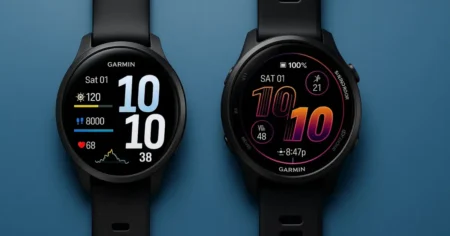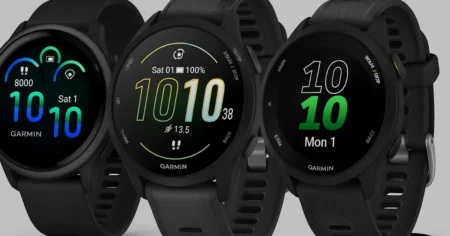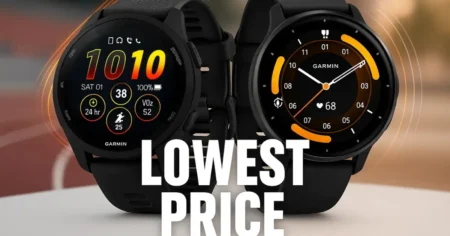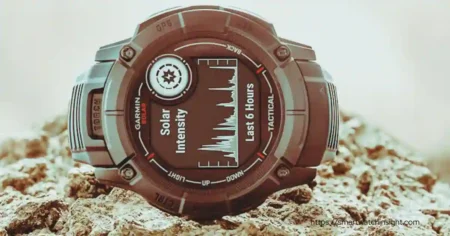Are you considering upgrading your fitness smartwatch or stepping into the world of Garmin wearables? Chances are you’re torn between the new Garmin Vivoactive 6 and the popular Garmin Venu 3.
Both watches shine regarding health tracking, wellness features, and sleek AMOLED displays. But dig a little deeper, and you’ll find fundamental differences in calling features, ECG support, and battery efficiency.
I’ve personally tested both — and in this hands-on comparison, I’ll help you decide which one truly fits your lifestyle, budget, and fitness goals.
Garmin Vivoactive 6 vs Venu 3 My First Impressions: Style and Comfort
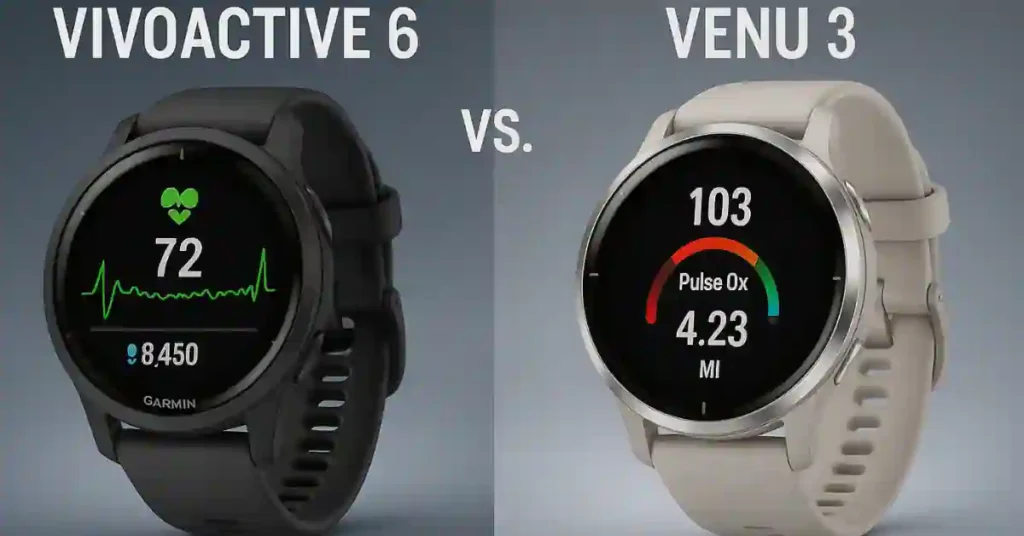
The Vivoactive 6 is light and slim and doesn’t scream “fitness tracker.” It fits snugly on my wrist, and even with the default silicone band, it feels comfy enough to wear all day and night.
It comes with a standard 20mm band that’s easy to swap—a massive plus if you like to match its outfits.
The Venu 3 looks more premium. Mine has a shiny stainless steel bezel that adds a bit of class.
It’s slightly bigger and heavier than the Vivoactive 6, but not by much. It also comes in two sizes, so smaller wrists are covered too.
✅ My take: If you care about looks and want something more high-end, go for the Venu 3. But if you wish for lightweight comfort, the Vivoactive 6 wins.
Garmin Vivoactive 6 vs Venu 3 Display: Bright and Beautiful
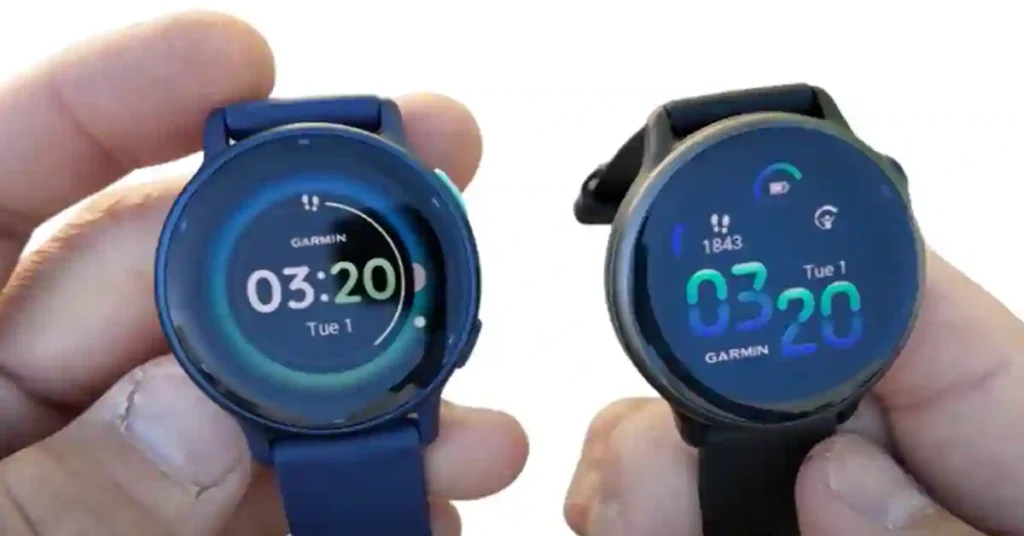
Both watches use AMOLED displays, and wow—they look great indoors and out.
The Venu 3’s screen is slightly larger (1.4 inches vs. 1.2 inches), making it easier to read messages and see workout stats at a glance. The colors, pop, and animations (like the on-screen workouts) feel smooth.
✅ My take: The Venu 3’s bigger screen is nicer if you prefer larger text and visuals, but both screens are sharp and vibrant.
Health Features: Sensors Make a Difference
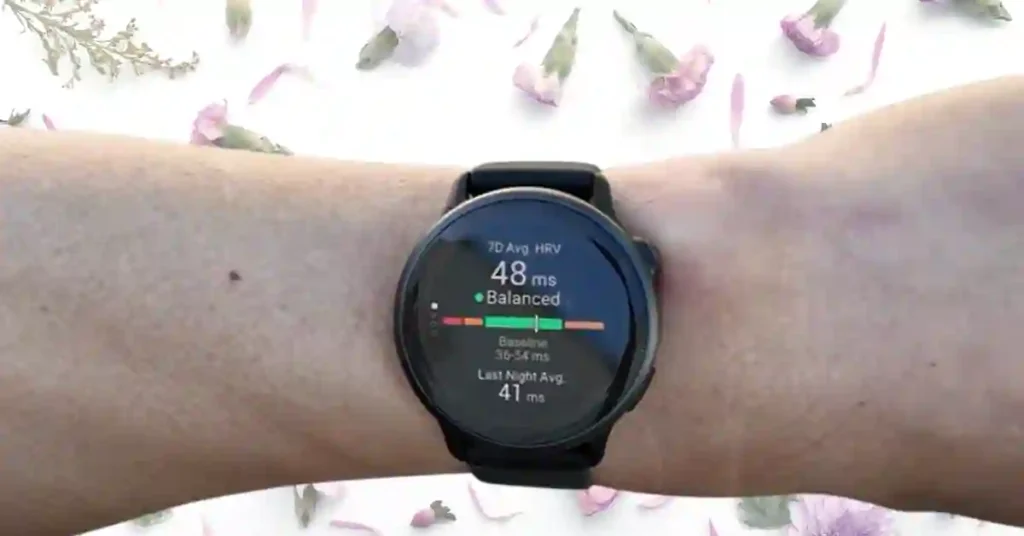
This is where the Venu 3 pulls ahead. It uses Garmin’s newer Elevate v5 sensor, which means you get:
- ECG (heart health check)
- Skin temperature tracking
Both watches work smoothly with various apps and devices, so it’s easy to integrate them into your current fitness setup.
That said, only the Venu 3 comes with a barometric altimeter, which is great if you’re into hiking or want to track elevation changes more accurately.
But if you’re more focused on day-to-day stats like steps, sleep, and heart rate, the Vivoactive 6 still delivers the goods at a lower price.
✅ My take: If you’re serious about health tracking or have heart concerns, the Venu 3 is the safer bet. However, for everyday metrics like heart rate and sleep, the Vivoactive 6 is still solid.
Fitness & Smart Features: Neck and Neck (Almost)
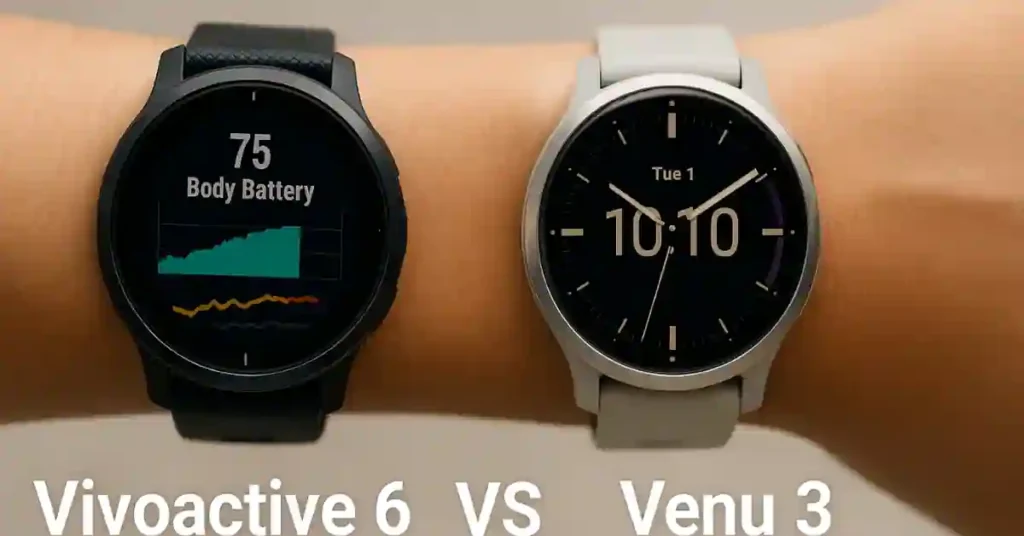
Both watches are packed with tools like:
- Animated workouts
- Garmin Coach
- Body Battery
- VO2 Max
- Nap detection
The Vivoactive 6 adds newer software features like running power and race predictions—great for runners.
But the Venu 3 has a speaker and mic, which means:
- You can take calls from your wrist
- Hear audio prompts during workouts
✅ My take: Both are great for training plans and tracking. However, if calls or audio cues matter, the Venu 3 has the edge.
Garmin Vivoactive 6 vs Venu 3 Battery Life
Garmin promises:
- Up to 11 days on the Vivoactive 6
- Up to 14 days on the Venu 3
In real use, I got:
- 8–9 days on Vivoactive 6
- 10–11 days on Venu 3
✅ My take: Both are excellent, especially compared to smartwatches like the Apple Watch. The Venu 3 lasts longer, but both easily get you through the week.
Garmin Vivoactive 6 vs Venu 3 Price: Is the Extra $150 Worth It?
That’s a $150 gap. With the Venu 3, you’re paying for:
- ECG + advanced sensors
- Speaker + mic
- Bigger display
- Slightly better battery
If you’re looking for a well-rounded fitness watch that offers excellent value for money, the Vivoactive 6 is hard to beat.
However, if you’re after all the bells and whistles, the Venu 3 is a worthy investment.
Garmin Vivoactive 6 vs Venu 3: Specs
| Feature | Garmin Venu 3 | Garmin Vivoactive 6 |
|---|---|---|
| Display | AMOLED, 1.4″ (454×454) | AMOLED, 1.4″ (454×454) |
| Touch + Button | Yes (Touch + 2 buttons) | Yes (Touch + 2 buttons) |
| Bluetooth Calling | ✅ Yes | ❌ No |
| ECG | ✅ Yes (in supported regions) | ❌ No |
| HRV Status | ✅ Yes | ❌ No |
| Wheelchair Mode | ✅ Yes | ❌ No |
| Battery (AOD OFF) | 14 Days | 11 Days |
| Battery (AOD ON) | 5–6 Days | 6–7 Days |
| Music Storage | Yes | Yes |
Final Verdict: Which One Should You Buy?
🎯 Pick the Vivoactive six if:
- You’re new to Garmin or casual about fitness
- You want a stylish, comfortable watch under $300
- You don’t need ECG or call functionality
🎯 Pick the Venu 3 if:
- You want the best Garmin health features
- You need calling or audio responses on your wrist
- You want a premium-looking watch with a bigger screen
Honestly? I enjoyed using both. But if I had to choose one for everyday life and fitness tracking on a budget, I’d lean toward the Vivoactive 6.
If I were treating myself or wanted the best Garmin has to offer under $500, I’d grab the Venu 3 in a heartbeat.
FAQs on Garmin Vivoactive 6 vs Venu 3
Can Garmin Vivoactive 6 make phone calls like the Venu 3?
No, the Vivoactive 6 doesn’t support Bluetooth calling. The Venu 3 has a built-in microphone and speaker, letting you take calls from your wrist.
Is Vivoactive 6 better for battery life?
Yes, especially with the Always-On Display turned off. You’ll get 11 days vs. 14 days on Venu 3, but Venu 3 drains faster with calling/music usage.
Also See:-





